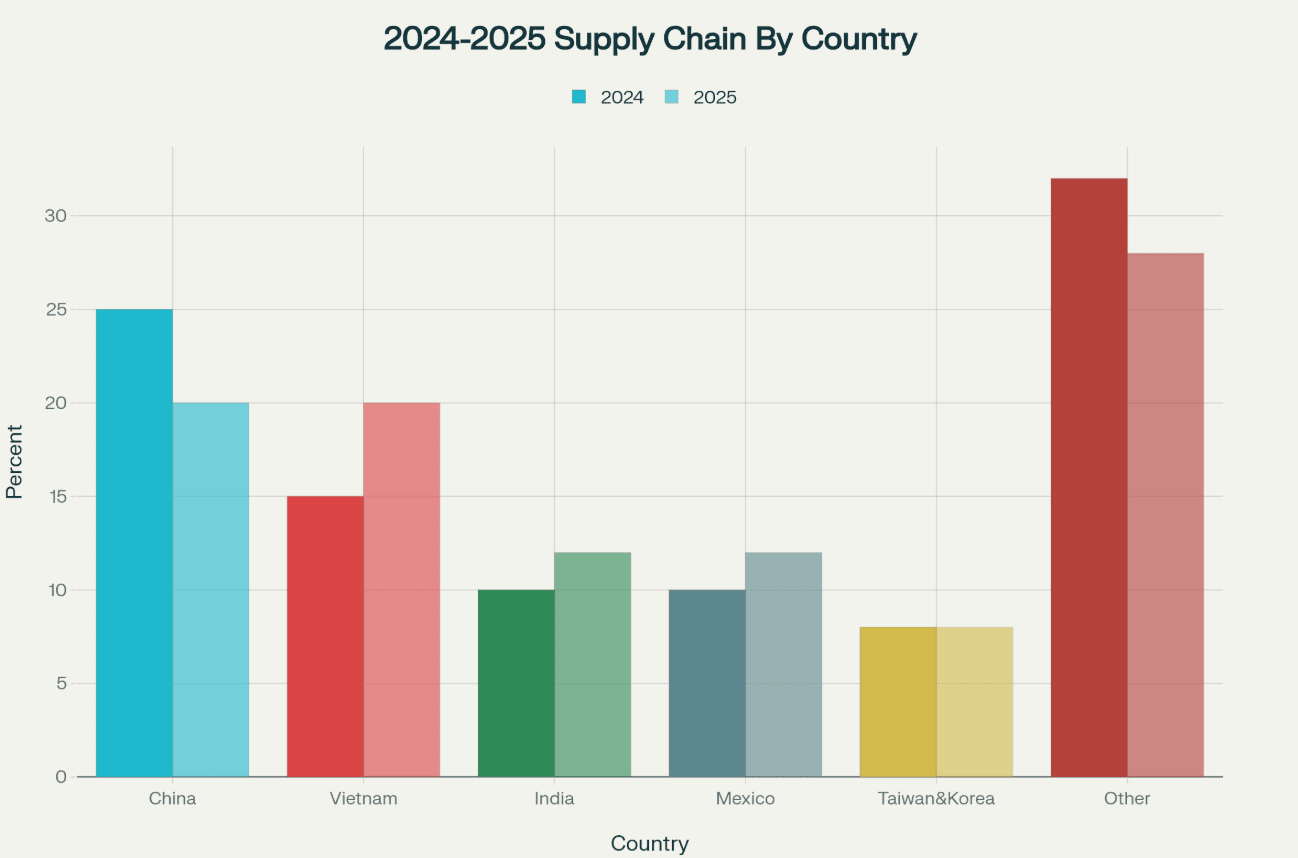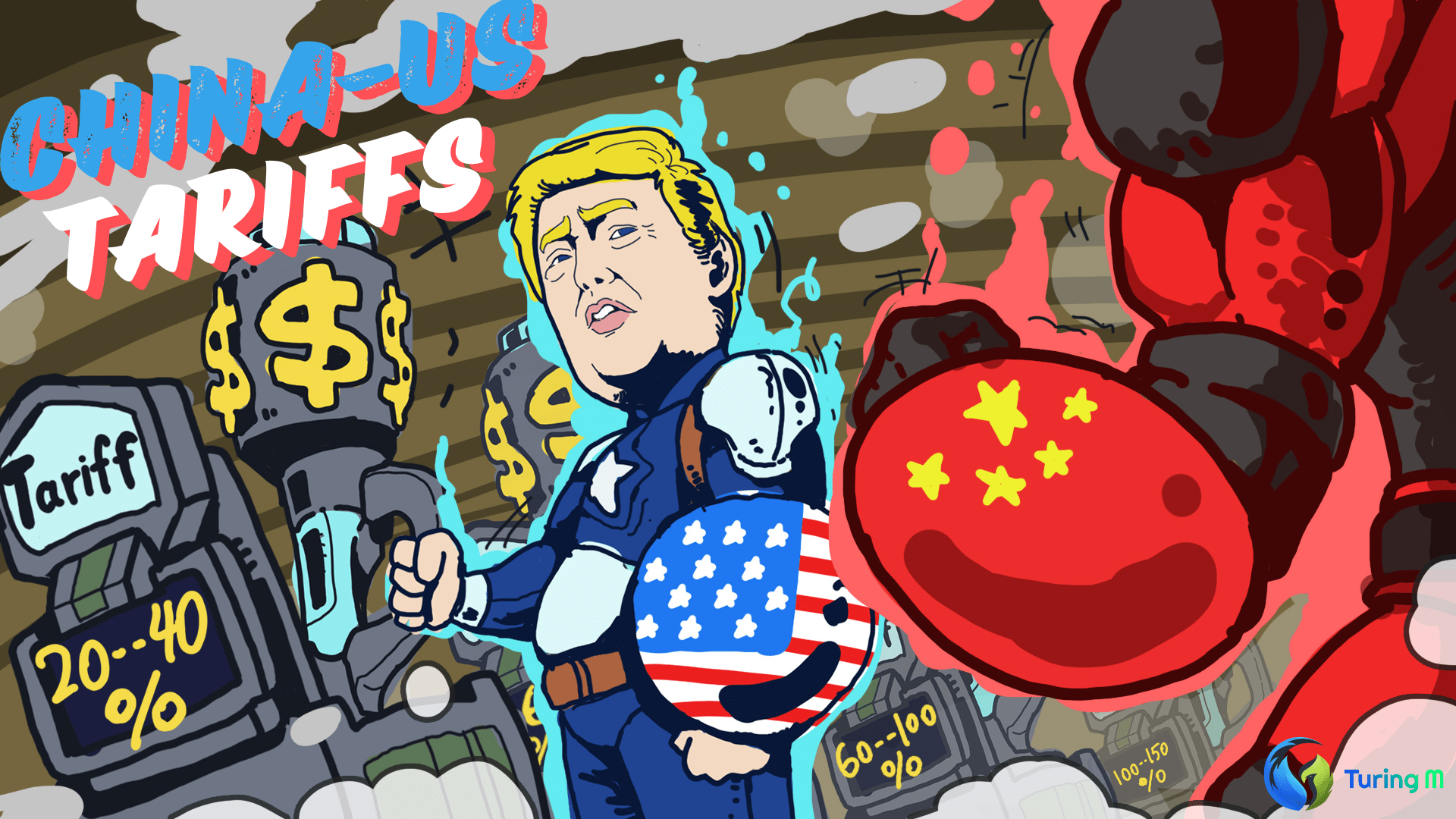
At the turning point of globalization entering the 'divided era', the US tariff system against China has evolved from 'Section 301' to a multilayered overlapping mechanism by 2025, fundamentally disrupting the landscape of cross-border business and supply chains. At the same time, the Web3 ecosystem, represented by blockchain and crypto technology, is becoming a new battlefield where enterprises and capital seek resilience and opportunities amidst turmoil. This article will conduct an in-depth analysis from four dimensions: macro policies, industry chain reshaping, capital flows, and technological innovation, and propose strategic recommendations for enterprises and investors.
1. Overlapping Tariff Matrix: The Cost Vortex under Multiple Legal Authorizations
Since the United States launched tariffs under 'Section 301' in 2018, the additional tax burden on China has far exceeded a single rate of 25% or 7.5%. At the beginning of 2025, an extra 20% was imposed based on the International Emergency Economic Powers Act (IEEPA), and in April, an additional 10% was added through 'reciprocal tariffs'. Coupled with the still high Section 232 tariffs — 25% on steel and aluminum, 50% on newly added copper, and the previously suspended Section 321 'minimum reduction' exemption which imposed over 30% fixed taxes on low-cost e-commerce goods, a real tax rate range of 30% to 70% is formed. Some mixed products may even exceed 100%. This complexity and opacity are becoming the core means for the US to apply pressure through multiple acts and reasons (intellectual property, national security, trade deficits, fentanyl crisis).
2. Global Supply Chain Restructuring: From China +1 to Regional Balance
Under the pressure of high tariffs, companies are forced to reshape the global supply chain map. Data shows that the share of supply chains in Vietnam, India, and Mexico will rise from 15%, 10%, and 10% in 2024 to 20%, 12%, and 12% (Chart 1) respectively. Although China's share remains the largest, it has dropped from 25% to 20%, reflecting that 'China +1' is no longer an option but has become a survival strategy for businesses.
In this process, companies face not only cost considerations but also hidden compliance and traceability risks. Extended cross-border logistics, complex customs classifications, and cash flow pressures arising from shipping and tariffs are driving more companies to utilize supply chain visualization and smart contract technology to achieve multi-site redundancy and compliance automation.

3. Capital and Hedging: A Web3 Financial Sanctuary
Geopolitical risks of tariff policies affect financial markets; US crypto exchanges experienced an outflow of $223 million in early August, closely linked to fluctuations in the RMB to USD exchange rate between 7.18 and 7.20 (Chart 2). Against the backdrop of traditional hedging tools failing or becoming more costly, stablecoins and mainstream crypto assets have become a 'digital safe haven' for companies and high-net-worth individuals seeking short-term hedging.
Additionally, the implementation of blockchain in supply chain traceability and cross-border settlement is providing explosive growth opportunities for Web3 companies. Smart contracts can embed tax rates and logistics information to achieve automated clearing; NFTs and exclusive wallets are giving rise to the DTC (Direct-to-Crypto) e-commerce model, helping small and medium-sized enterprises in China directly target global consumers with crypto assets, bypassing the cumbersome processes of traditional banks and customs.
4. Regulation and Compliance: Opportunities and Challenges in Tightening Boundaries
In the face of tariff arbitrage and cross-border capital flows, global regulatory bodies have swiftly followed suit. The United States and the European Union are strengthening KYC/AML reviews for crypto exchanges and plan to incorporate cross-border settlement of stablecoins into the customs declaration system; China is vigorously promoting the digital yuan (e-CNY) in Southeast Asia and Latin America as part of its financial sovereignty strategy, using 'currency diplomacy' to counter the dollar system. This means that Web3 companies must seek compliance arbitrage across multiple national regulations while enhancing technical integration to ensure that capital flow and product compliance run in parallel.
5. Strategic Recommendations: The Dual Drive of Resilience and Innovation
In-depth Insight into Supply Chains and Diverse Redundancies
Establish end-to-end visibility covering second and third-tier suppliers, using blockchain technology to trace the origin and supply risks of core raw materials (such as rare earths and copper), while paralleling production capacity in Vietnam, Mexico, India, and the US.Web3 Settlement Network and Compliance Middleware
Build a multi-chain stablecoin network, deeply integrate with traditional ERP, WMS, and customs automation systems; deploy a smart contract tax engine to achieve automated release and settlement of dynamic tax rates, reducing human error and regulatory risks.Crypto Hedging and Currency Strategies
Utilize stablecoins to hedge against RMB volatility risks while focusing on the application of digital yuan in Southeast Asian markets, laying out e-CNY clearing channels to ensure localized payment and financing convenience.Regulatory Sandboxes and Cross-Border Compliance Alliances
Actively participate in multiple countries' regulatory sandbox pilots, collaborating with customs and financial regulatory authorities to design a 'crypto compliance middleware' to adapt in advance to the new normal of cross-border e-commerce and capital flow regulation.Data-Driven Decision Making: Continuous Dynamic Adjustment
Recommend that enterprises and investment institutions establish a 'Tariff Impact and Supply Chain Risk Dashboard' based on BI and AI, to monitor policy changes, cargo flows, and capital trends in real-time, achieving dynamic adjustments and forward-looking layouts.
Conclusion: The US-China tariff war in 2025 is not just a trade friction but a watershed in global economic governance and technological innovation paths. Enterprises must build resilient supply chains and dynamic compliance systems centered on Web3 and smart contracts amidst fragmented uncertainty to seize the new round of global innovation dividends in the tide of the divided era.

🔍 Follow Turing AI for early insights into the future
Follow us for real-time predictions, AI insights, and market dynamics:
🌐 Official Website: https://www.turingm.io
🐦 X / Twitter: https://x.com/TuringMarket
💬 Farcaster: https://farcaster.xyz/turingm-ai
📚 White Paper and Roadmap: https://docs-en.turingm.io/
🔮 Prediction Market Entrance (Test Network): https://avax-test.turingmarket.cc
Let AI guide you to foresee the next step,
Turing Market —— Harnessing predictions to navigate an uncertain future.
#美国加征关税 #加密股IPO季 #香港稳定币新规 #美股代币化